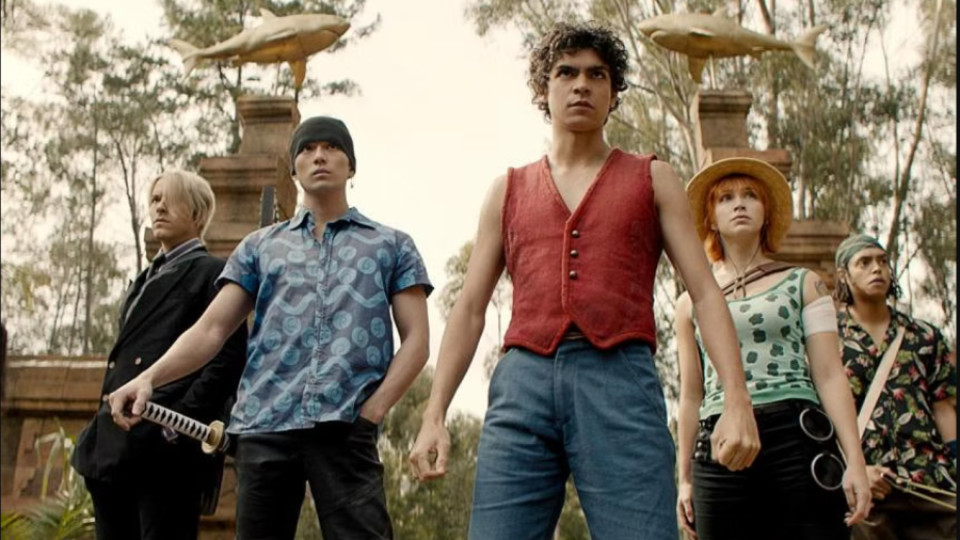Popular Reads
Top Results
Can't find what you're looking for?
View all search resultsPopular Reads
Top Results
Can't find what you're looking for?
View all search resultsOne Piece manga creator had full control over Netflix adaptation
Unusual for a Hollywood production, One Piece author Eiichiro Oda was given final say over how the show was made – and was not shy about exercising it.
Change text size
Gift Premium Articles
to Anyone
B
y some estimations, Japan’s Eiichiro Oda is one of the top 10 best-selling fiction authors of all time – up there with William Shakespeare, J.K. Rowling and Agatha Christie.
And for those who are not fans of manga, or Japanese comics, the 48-year-old might also be the most successful writer you have never heard of.
But that could change now that Netflix has adapted his action-adventure epic One Piece (1997 to present) – the best-selling manga series of all time – into a live-action series.
Premiering on the streaming service on Thursday, the eight episodes take place in a fantastical world of vast oceans, islands and pirates, and follow an aspiring young pirate named Luffy (Inaki Godoy) as he searches for a fabled treasure with his crewmates Zoro (Mackenyu) and Nami (Emily Rudd).
Unusually for a Hollywood production, Oda was given final say over how the show was made – and was not shy about exercising it.
Speaking to The Straits Times and other media over Zoom, the beloved manga creator – who likes his privacy and keeps his face off camera – says through an interpreter: “The biggest challenge I faced was to not betray the expectations of existing fans of One Piece. And I think we were successful at that.”
But he was exacting when it came to the quality of the show, which was developed by American writer-producers Matt Owens and Steven Maeda, but which he executive-produced.
Oda – who holds a Guinness World Record for selling more than half a billion copies of the One Piece manga series, which puts him at No. 10 on a Wikipedia list of the best-selling fiction authors of all time – says: “I cared about every detail and I didn’t want to compromise.
“I knew that if something was going in the wrong direction, I needed that executive producer title to be able to put a stop to things before it’s too late.”
In an open letter released in July, he revealed numerous scenes were reshot “because I felt they weren’t good enough to be put out into the world”.
In the interview, he says he did not hold back when critiquing footage he was shown.
“There were times when I would be very blunt with my notes about things I wasn’t happy with – and they responded to all of those,” Oda says.
“They allowed me to have the right to give the final blessing on all aspects of this production, whether it’s the scripts or the editing. And if I wasn’t satisfied, this wouldn’t see the light of day.
“I was giving very detailed notes on a lot of different scenes. But thankfully, the production team responded to all my notes, at a pace that surprised even me, and we were able to make this happen.”
One Piece has been adapted before in Japan – into an anime TV series (1999 to present) as well as various animated theatrical films and video games.
But Oda had turned down many previous offers to translate his brainchild into a live-action series.
“I believed that manga works were not meant to be adapted into live action to begin with. You’re supposed to be doing something that’s not easy to adapt into live action,” says the creator, who is regarded as one of the most influential manga artists and has received numerous awards for his work.
“But at a certain point, visual effects technology and production values started to advance to a place where I’d see movies that convinced me that, with the technology today, it is possible. So I started thinking about finding the right partner to work with.”
Having grown up in a generation that idolized Hollywood films, Oda says he had “every expectation that if it was Hollywood producing [this], the production values and quality would be very high”.
“I expected that, instead of a Japanese studio producing this, Hollywood would be able to do justice to the world that I had drawn. And seeing the final product, my expectation came true,” he says.











